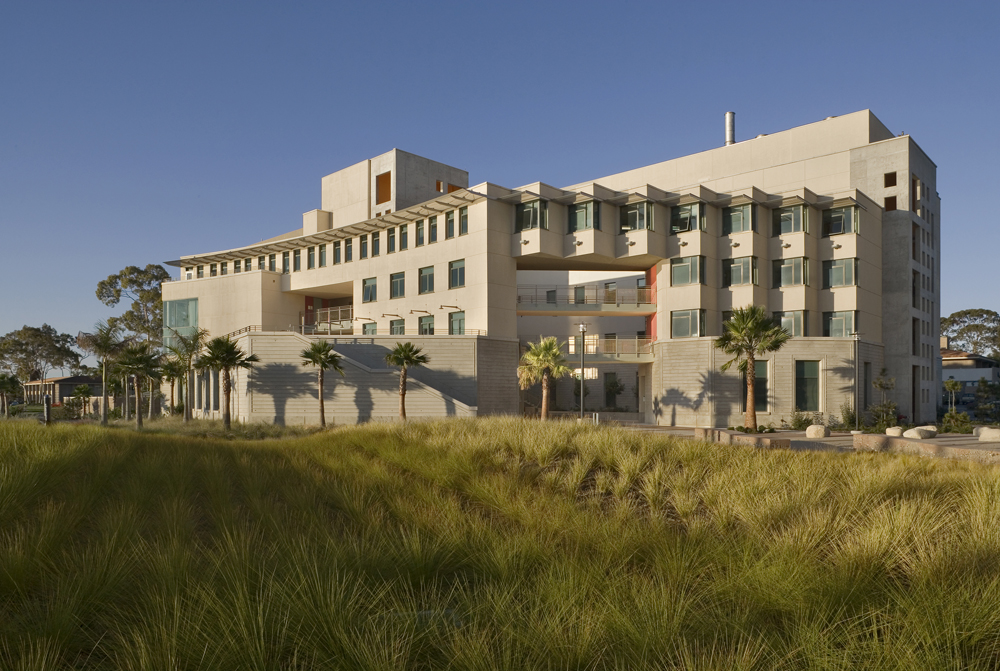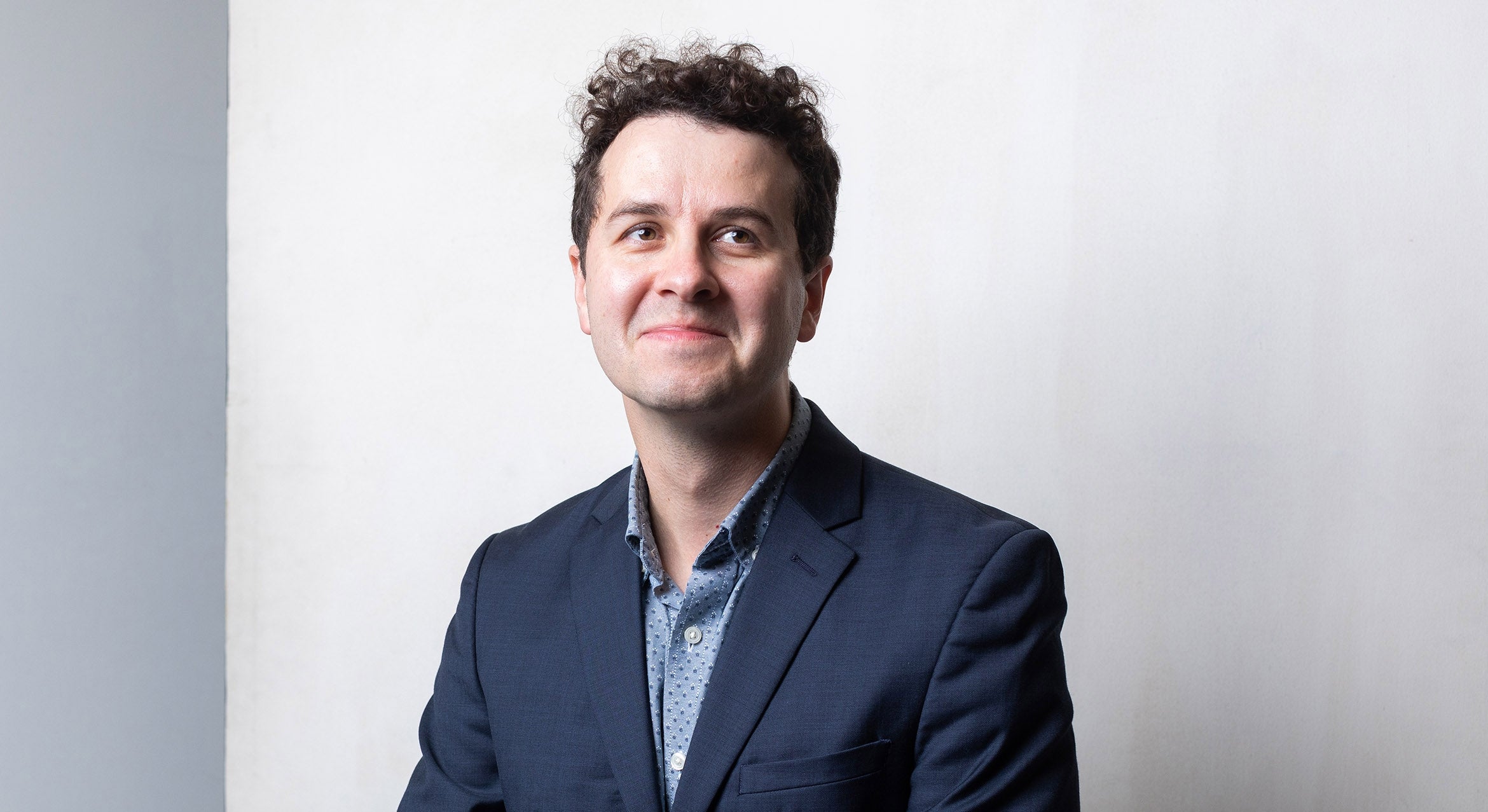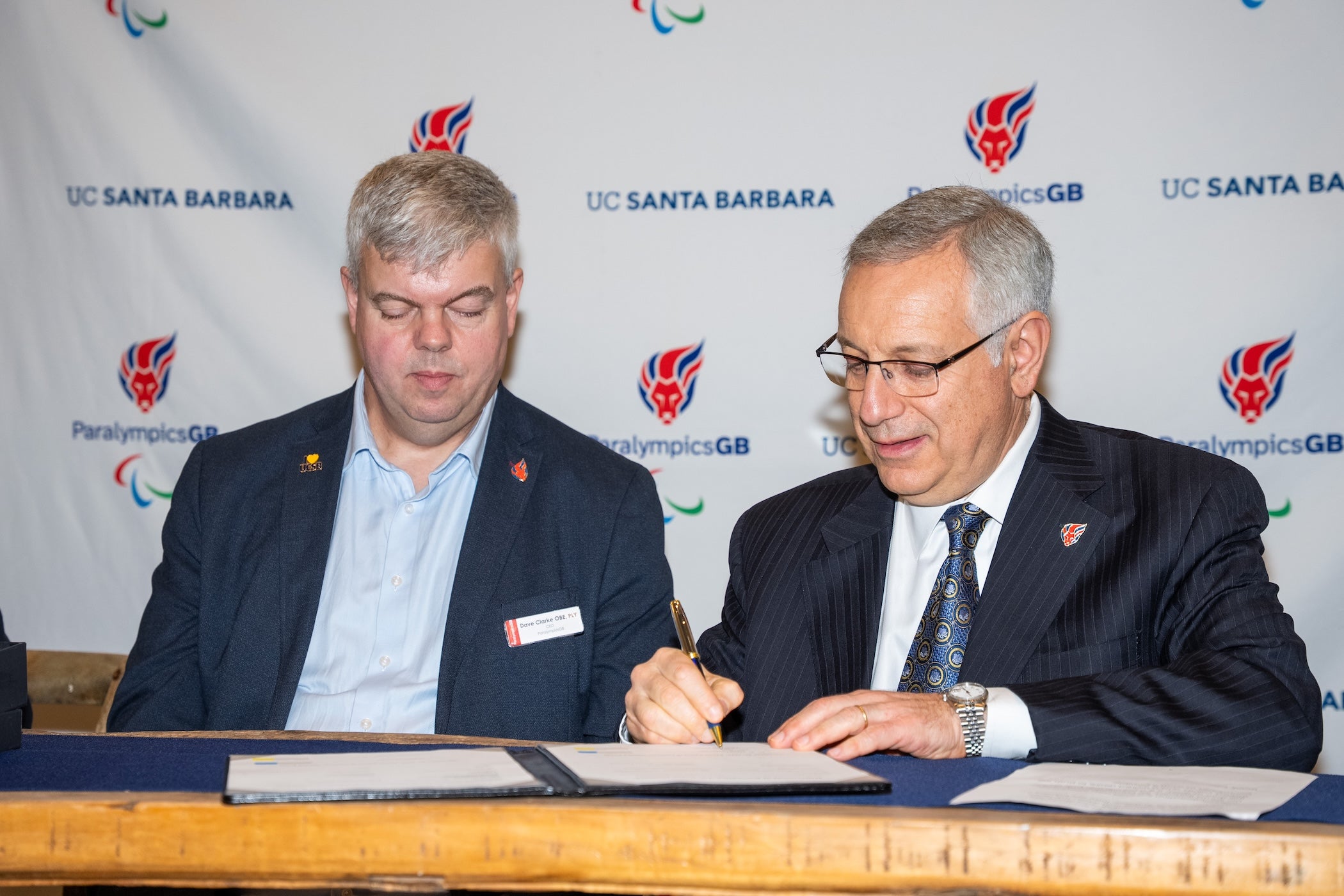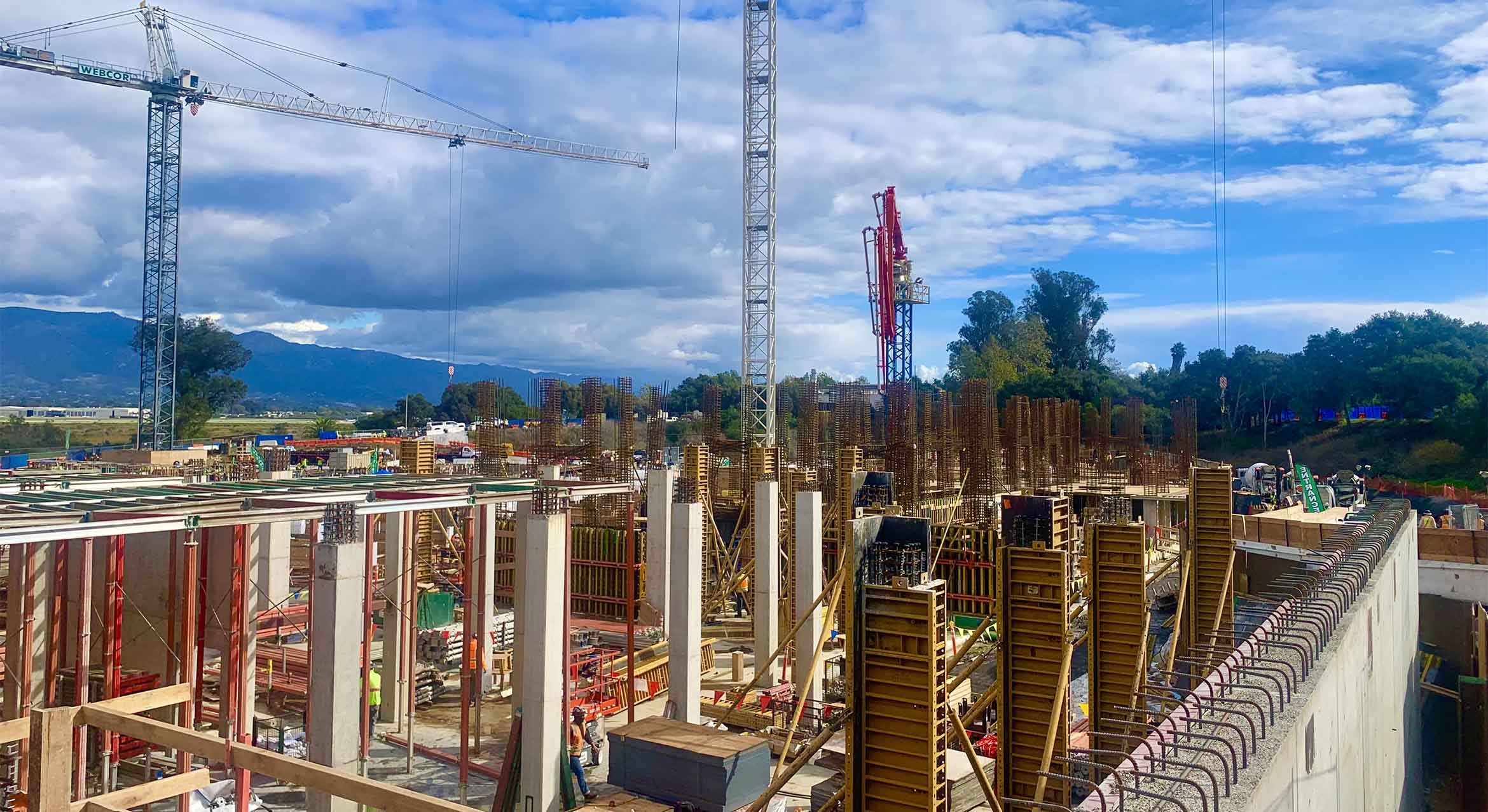
Marine Science Research Building Receives LEED Gold Certification From Green Building Council
UC Santa Barbara's Marine Science Research Building has been awarded Leadership in Energy and Environmental Design (LEED) Gold certification by the U.S. Green Building Council (USGBC).
The Marine Science building, also known as MSRB, received the LEED Gold certification in the Existing Building category. LEED is the USGBC's rating system for designing and constructing the world's greenest, most energy-efficient, and high-performing buildings. MSRB is home to UCSB's Marine Science Institute, recognized as an international leader in ocean and environmental research, and in marine science and policy.
"The new LEED Gold-Existing Building certification for our Marine Science Research Building affirms our commitment to not just ‘building green,' but also ‘living green,' " said UCSB Chancellor Henry T. Yang. "Our faculty, students, and staff have worked together with tremendous dedication and creativity to help our campus implement sustainable practices over the long term, such as recycling, energy and water efficiency and conservation, green cleaning and grounds maintenance, environmentally preferable purchasing, and so much more. We are very proud that UC Santa Barbara continues to lead the way in the research, teaching, and practice of environmental sustainability."
Bruce Tiffney, dean of the College of Creative Studies and co-chair of the Chancellor's Sustainability Committee, said: "This is a great testament to the vision of the campus and the efforts of its students, faculty, and, particularly, its staff to move the campus to a model of commitment to sustainable practices."
According to Jordan Sager, LEED program manager, MSRB is a relatively young building, constructed in 2005. It was designed to be efficient, achieving LEED certification in the New Construction category in 2006. But, even after it was occupied, campus building engineers were able to further reduce energy use by 44 percent, Sager said.
"Bringing sustainability through each building's life cycle is a priority for UCSB as we make progress toward meeting our campuswide environmental performance targets," Sager said. "Third-party verification through LEED confirms that the measures being taken in campus buildings like MSRB are having a positive impact."
Some of the sustainable features of the 60,542-square-foot MSRB include an efficient lighting system and controls; extensive metering system to track energy use and air quality; waterless urinals and low-flow sinks; the use of reclaimed water to irrigate its drought-tolerant landscape; passive ventilation in perimeter offices; and renewable materials in carpet, wood fixtures, and concrete.
MSRB is one of 10 UCSB buildings to receive LEED certification. In 2010, the Life Sciences Building and Harder Stadium Office Building were awarded LEED Silver (Existing Building) certifications, while a new complex that includes the Social Sciences & Media Studies Building and the Gevirtz Graduate School of Education, the Koegel Autism Center, and the Hosford Counseling Clinic received LEED Silver (New Construction) certification. Also in 2010, an addition to Engineering II received LEED Gold (New Construction) certification.
In 2009, the San Clemente Villages graduate student housing complex received LEED Gold certification in the New Construction category. Bren Hall, home of the Bren School of Environmental Science & Management, became the first building in the country to receive double LEED Platinum certification –– in the New Construction (2003) and Existing Buildings (2009) categories.
In 2005, Girvetz Hall became the first building at UC Santa Barbara to be certified in the LEED Existing Buildings category. It achieved an LEED Silver rating, becoming the first LEED for Existing Buildings project in the UC system. In 2008, the Student Resources Building received LEED New Construction Silver certification, while the Recreation Center received LEED Existing Building Silver certification.
UC Santa Barbara is one of three universities in the U.S. participating in the pilot phase of the LEED Portfolio Program. The campus plans to certify 25 existing buildings by the end of 2012. In 2002, UCSB adopted a campus policy stating that all new buildings commissioned after July 1, 2004, must meet a minimum of LEED Silver. In 2010, the Chancellor's Sustainability Committee established a new policy that all buildings commissioned after July 1, 2010, must meet a minimum of LEED Gold.
Related Links
UCSB Sustainability
U.S. Green Building Council
Marine Science Institute



